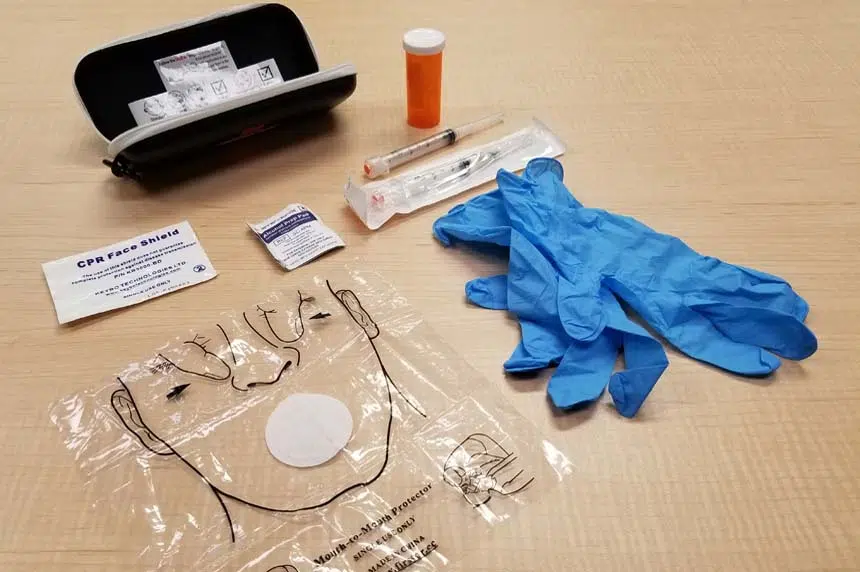As Saskatoon grapples with a new development in the opioid crisis, health workers hope to distribute more life-saving kits to reverse overdoses.
Saturday morning saw police and paramedics rush to three separate addresses for a total of six people reported to be suffering from fentanyl overdoses. Two of those people died. One was last reported in a coma at a Saskatoon hospital and the other three are expected to recover.
Police later linked the overdoses to a batch of fentanyl-laced cocaine and arrested three men suspected of peddling the tainted drugs.
Speaking on the Brent Loucks show, Saskatoon police Insp. Dale Solie said fentanyl overdoses are sadly nothing new. However, Solie said this was the first time the city was seeing deaths resulting from the deadly opioid being mixed into a more widely-used drug like cocaine.
“We are so concerned for public safety on this matter. This obviously can cause death. We’re concerned and we want to get this product off the street,” he said.
Solie urged people not to take street drugs, but repeated a request from police that anyone who may have bought tainted drugs consider turning them in to Saskatoon police headquarters to be safely disposed. He said anyone doing so wouldn’t have to worry about facing a possession charge.
Meanwhile, mental health and addictions experts with the Saskatchewan Health Authority called on drug users and their loved ones to seek out naloxone kits.
Dr. Peter Butt said shallow breathing is a typical sign of an opioid overdose, with sufferer’s lips and fingernail beds beginning to turn blue. He said sufferers may be difficult to rouse and may eventually stop breathing altogether.
Butt said a timely injection of naloxone can reverse the overdose, even in cases where an opioid may be mixed in with another drug, such as cocaine.
“(People) don’t have to worry. This is not going to cause harm and it may still save a life if it’s a drug mixture of some sort,” he said.
Butt stressed people should still call 911, even if administering naloxone is successful.
“Although the naloxone may begin to work within five minutes, it may stop working after 20 to 30 minutes. And during that period of time the opioid poisoning may continue.”







